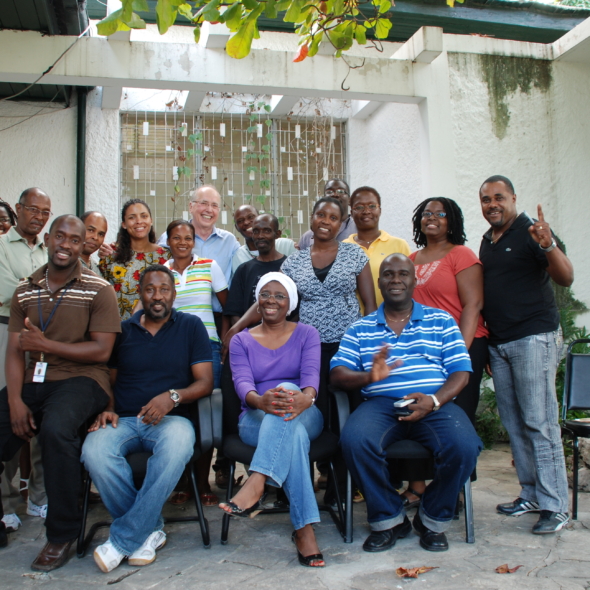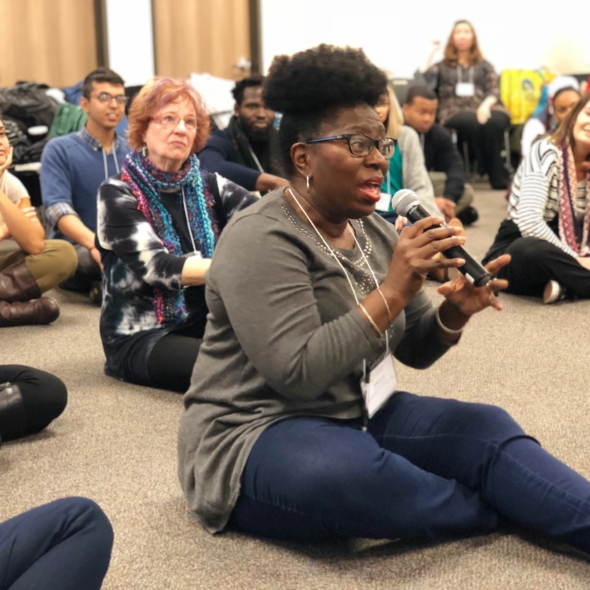I did an interview recently about depression, the work that I do through The Center for Mind-Body Medicine, and my book, Unstuck: Your Guide to the Seven Stage Journey Out of Depression. Hopefully you will find it not only informative, but helpful as well.
Speaking with James Gordon, MD
Your book begins with the assertion, “Depression is not a disease.” How did you come to this conclusion?
It always seemed strange to me that anyone would describe depression as a disease. In medical school, I learned that diseases were characterized by specific physiological and biochemical abnormalities and physical changes. When I was doing autopsies and I looked at the organs of people who had diseases, I could see cancer cells, or blood clots in the arteries, or obvious changes in the pancreas of someone with insulin dependent diabetes. So far as I could tell then, and so far as I know now, this is not the case with depression. Depression, it seems to me, is a way of feeling and a set of attitudes that people develop toward the world, influenced certainly by heredity but, much more importantly, a result of their entire life experience. It is certainly not the consequence of a bacterial invasion or a specific genetic abnormality.
I found, too, that when I spent time with depressed people and helped them understand and experience the world differently that they tended to become less depressed. Their depression was a human experience and when that experience changed, their depression lifted. They were having a change of mind and a change of heart. When I myself became clinically depressed while I was in medical school, my body felt weighed down, my mind was preoccupied with guilt, and my heart was heavy. But it was clear to me that the events in my life—the end of a romantic relationship and my very mixed feelings about medical school—not some disease process was responsible for what I was feeling.
If you look at depression as a disease, you can treat it that way—and the pharmaceutical companies definitely encourage doctors to do so. But this seems, to me, an ill-considered choice. If you look at depression as a human experience from which you can learn, the possibilities are infinitely greater and, in my experience, the prognosis is far better.
You point out that there is little evidence that antidepressants are more effective in treating depression than many other, less potentially toxic approaches. Interestingly, in January the New England Journal of Medicine (NEJM) published a report that stated that doctors and patients are getting a distorted view of the effectiveness of antidepressant medications because of pharmaceutical manufacturers’ suppression of negative results. And yet antidepressants are being prescribed and taken at an alarming rate. Why do you think the medical establishment continues to prescribe these drugs so commonly?
200 million prescriptions will be written in the US this year. This widespread, even epidemic use of antidepressants reminds me of the Hans Christian Andersen story of The Emperor’s New Clothes. We are all, like the Emperor, his courtiers, and his subjects, in a state of collective hypnosis. The science that demonstrates the biological consequences of depression in some people and the benefit of drugs for others is the small piece of reality at the core of this illusion. It has been augmented by the desire of physicians to be of help to their patients, and relentlessly inflated by the pharmaceutical companies that profit so hugely from these drugs, and the insurance companies who realize larger financial gains by prescribing pills rather than personal counseling.
When you take a close look at the biological claims which set the stage for this mass hypnosis, another picture emerges. There are biological changes in depression—as indeed there are in joy—but these changes are inconsistent and, in any case, are far more likely the result of feelings of loss, hopelessness, and helplessness, than their cause.
The NEJM study, which actually confirms several earlier ones, is the voice of the little boy pointing out the Emperor’s nakedness. When the drugs are looked at fairly—that is when the negative studies that the drug companies did not publish are counted as well as the positive ones they did publish—it turns out that antidepressant drugs do not, on average, make very much difference. In the Andersen story, after the little boy speaks up, everyone starts laughing and the scamming tailors are run out of town. But because the idea of drugs as a “quick fix” is so seductive and the pharmaceutical and insurance companies are financially motivated to continue to promote the use of antidepressants, I think it’s going to take us a while longer to find our own happy ending.
Our culture does seem to be easily sold on promises of a quick fix.
Depression is incredibly painful. It’s certainly understandable that we want to feel better as fast as possible. And it is a part of our culture to believe we should be able to have a quick solution and there’s got to be a pill to make it happen. Some pills are fabulously useful—antibiotics for bacterial infections, for example—and they encourage us to have this belief. Still if we were paying attention for the last half century, we would have learned that those quick fixes are very often an illusion. Many so called miracle drugs—Vioxx and the FenPhen diet pills, for example—have turned out to have terrible, even life-threatening, side effects. But it’s not just drugs that are problematic here. We want to be able to have it all now. And in our demand and greed, we’ve lost the wisdom that helps us comprehend the consequences of our actions. In the case of depression and life’s other challenges, we’ve also lost the understanding that our suffering is sometimes both a necessary teacher and a prelude to profound, life enhancing change.
Your book explains the seven stages of your approach to healing depression without the use of antidepressants and gives a hands-on program of practices, exercises and suggestions that will relieve depression’s symptoms. How did you come to develop this program?
The techniques that I use and describe in Unstuck are ones that I first learned and tested on myself. Each of them is designed to address different parts of the picture that we describe as depression: quiet breathing techniques that are an antidote to the ongoing stress response that plays such a large part in precipitating depression and making it chronic; the use of guided imagery, written exercises and drawings to open depressed people up to their intuition and to possibilities for change that had seemed beyond them; experiments with movement and exercise that break up the fixed patterns of thought and feeling that characterize depression and raise the energy of depleted and discouraged people. All of these approaches make it possible for depressed people—and those who are ordinarily confused, anxious, and troubled—to realize that they do not need to be helpless and hopeless. As you do each of these techniques, you can see and feel the change. Usually right away. Over the years, I’ve created clear instructions and a logical sequence for these techniques, both of which I present in Unstuck. What I do in my office, and in the book, is to give people a step-by-step experience of these approaches and of their benefits.
How do you encourage people to shift their thinking and take an active, effective role in their own healing?
My experience is that if you offer them the opportunity, most people want to take an active part in their own healing. This is particularly true after they’ve seen that what they’ve been doing isn’t working so well. We’ve created a social belief that the power to heal lies in the hands of the experts, the doctors. In the case of depression, and indeed of many chronic conditions, this is simply not true. Silver bullets are very rare. I find that the people I work with are first amazed, and then deeply satisfied, when I tell them they have the capacity to help themselves—especially when they actually experience the positive changes they can make. I know it’s very hard when you’re really depressed—I’ve been there—but I also know that the small changes in belief or action (breathing more slowly and deeply, going for a brief walk, etc,) can brighten your outlook and be the basis for ever-more significant and broader changes. I think one of the most important things I do in Unstuck is to say it is possible to change—and then show how people just like the reader, and in many cases far worse off than the reader, have accomplished just that.
Would you explain the concept behind integrative medicine?
Perhaps the most important, and often neglected, aspect of integrative medicine is its emphasis on the wholeness, the integrity, of each person. This is fundamental to all great systems of healing, including, of course, our Western medicine, but it has unfortunately been neglected. We have tended to focus too much on the particular biological abnormalities, on the parts. We have neglected to appreciate how all those parts are connected in each of us, in the thinking, feeling, acting human being who is far greater than the sum of his parts.
Integrative medicine is an approach that includes all of the world’s healing traditions and combines and carefully individualizes them to the person who is coming for help. The approach that I describe in Unstuck, for example, integrates meditation techniques from several cultures with modern ways of expressing emotions; Chinese medical therapies that are thousands of years old with the latest information on the use of vitamins, minerals, and other supplements; and a group approach that combines ancient tribal wisdom with the modern, democratic emphasis on each person’s capacity to help and understand herself.
You are a Harvard-trained psychiatrist. How did you first become involved in integrative medicine?
My involvement began 45 years ago during the first months of that Harvard training. I deeply respected the expertise of our faculty, but I was also troubled by the way that many of them treated patients. I felt they focused too exclusively on the patients’ laboratory values and physical findings and was troubled by their apparent indifference to the human beings who were lying on the beds around which we stood. I found that I was at least as interested in who my patients were as in the diagnoses they had been given.
As a third year medical student, I was actively questioning the disease model of depression and other psychiatric conditions, and began to explore ways to help my patients to understand and help themselves. By the time I finished my psychiatric residency and began work as a researcher at the National Institute Mental Health in 1971, I was already exploring meditation, yoga, nutrition, and Chinese medicine—for myself, then, as time went on, I began to use these techniques with other people. For a couple of years, I had a weekly free clinic in my home. After awhile, I began to integrate these approaches into everything that I was doing—working with troubled teenagers and their families at NIMH as well as in my private practice.
You’ve helped many thousands of people who’ve been depressed and traumatized by war and disaster in places such as Kosovo, Israel, Gaza, and post-9/11 New York City and post-Katrina New Orleans. How is this work related to the program you describe in Unstuck?
The program The Center for Mind-Body Medicine uses for people traumatized by war and other disasters is very much the same as the one I describe in Unstuck. As a matter of fact, I’m giving the first few copies of Unstuck to the leaders of our programs in Israel, Gaza, Kosovo and New Orleans. I’m so pleased with Unstuck because I’ve been able to gather so many of the techniques I use, together with stories which show how people successfully use these techniques, as well as a Resources section to support readers on their journey, all together in one book for the first time.
One of the things about this approach is how well it translates across cultures, ages, and economic groups, both here in the US and overseas. I believe that in Unstuck, I’m speaking a universal language of self-discovery and self-healing that just about anybody can understand and benefit from.
Is your approach only for those who are diagnosed as clinically depressed?
It was very important to me to write a book for people who are feeling the helplessness and hopelessness of clinical depression. Though there are certainly other self-help books, it seemed to me that one was needed that was both practical and inspirational, as well as authoritative and scientifically grounded. I wanted people who were feeling overwhelmed and lonely to have a friendly guide on whom they could lean at every step as they moved on their journey through and beyond depression.
At the same time, I was aware as I was writing Unstuck, that it was also a guide for anyone who wanted to learn from the challenges that inevitably arise in all our lives, a guide that could help each of us to find our way to greater wholeness and happiness. This book is also for people who do not consider themselves depressed but are simply sad or dissatisfied with their lives. Many thousands of people who were not depressed—health professionals, medical students, people with physical problems, and spiritual seekers among them—have used the Unstuck approach happily and successfully.


